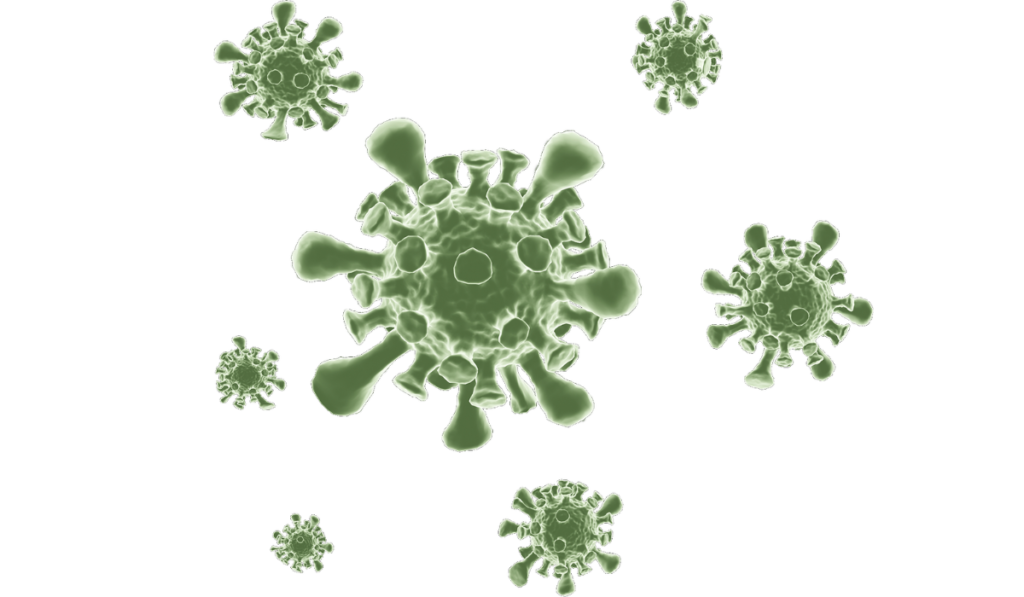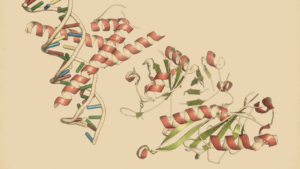The 4 Key Insights into the Gut-Lung Axis
Explore the gut-lung axis, uncovering 4 key insights into gut dysbiosis and its link to pulmonary diseases.

When the Gut Talks, the Lungs Listen...
Key Points
- The Gut-Lung Axis Concept: The article introduces the groundbreaking concept of the gut-lung axis, emphasizing the deep interconnection between the digestive and respiratory systems. The health and balance of the gut's microbial communities play a pivotal role in influencing lung health.
- Microbial Influence: Delving into the intricacies of gut microbiota, the article explores how specific bacteria in the intestines can impact the onset, progression, and severity of various pulmonary diseases.
- Potential for Treatment and Prevention: Highlighting recent scientific findings, the article underscores the potential of manipulating gut health as a preventive and therapeutic strategy for managing respiratory diseases.
- Holistic Health Implications: The gut-lung axis is discussed within the broader context of holistic health, emphasizing that a comprehensive approach to health must consider the interconnectedness of various bodily systems.
- Future Directions and Research: The article concludes with a look ahead, speculating on the future of gut-lung axis research, potential breakthroughs on the horizon, and the transformative potential of this knowledge for respiratory care.
In This Article:
Airways and Intestines: Gut-Lung Axis Mystery
In the vast interconnected system of the human body, few relationships have piqued the interest of researchers as much as the intricate dance between our digestive and respiratory systems.
The concept, often referred to as the gut-lung axis, has emerged as a groundbreaking area of study, shedding light on how the microbial communities in our gut can profoundly impact the health of our lungs.
As scientists delve deeper, it becomes evident that the bacteria flourishing in our intestines might hold the key to understanding, preventing, and even treating a range of pulmonary diseases.
This article, "The 4 Key Insights into the Gut-Lung Axis," embarks on a journey to decode this complex relationship, exploring the latest findings and their implications for holistic health and medicine.
Join us as we navigate the winding paths of the gut-lung axis, uncovering the secrets it holds and its potential to revolutionize respiratory care.

Secrets of the Lung Microbiome
For ages, the lung was deemed a sterile fortress, mainly because of limitations such as a lack of culture-independent approaches for microbial community profiling techniques and the risk of contamination from the oropharynx or nasal cavity through bronchoscopy techniques. A Trusted Source Barcik, W.; Boutin, R.C.; Sokolowska, M.; Finlay, B.B. The role of lung and gut microbiota in the pathology of asthma. Immunity 2020, 52, 241–255. [Google Scholar] A Trusted Source Budden, K.F.; Gellatly, S.L.; Wood, D.L.; Cooper, M.A.; Morrison, M.; Hugenholtz, P.; Hansbro, P.M. Emerging pathogenic links between microbiota and the gut–lung axis. Nat. Rev. Microbiol. 2017, 15, 55–63. [Google Scholar] But the tide turned with cutting-edge molecular methods for microbial characterization and metagenomic approaches, which revealed the detection of microbial DNA in the lungs of healthy individuals. A Trusted Source Dumas, A.; Bernard, L.; Poquet, Y.; Lugo-Villarino, G.; Neyrolles, O. The role of the lung microbiota and the gut–lung axis in respiratory infectious diseases. Cell. Microbiol. 2018, 20, e12966. [Google Scholar]
A Microbiome Odyssey: Respiratory Diversity Unveiled
Notably, the upper and lower respiratory tracts of healthy individuals exhibit striking microbiota difference. A Trusted Source Dang, A.T.; Marsland, B.J. Microbes, metabolites, and the gut–lung axis. Mucosal Immunol. 2019, 12, 843–850. [Google Scholar] These disparities underline niche-specific microbial colonization within distinct anatomical sites. A Trusted Source Lemon, K.P.; Klepac-Ceraj, V.; Schiffer, H.K.; Brodie, E.L.; Lynch, S.V.; Kolter, R. Comparative analyses of the bacterial microbiota of the human nostril and oropharynx. mBio 2010, 1, e00129-10. [Google Scholar] [CrossRef]Yet, the microbial community inhabiting the lungs is suggested to be partially seeded through microaspiration from the oral cavity.
Budden et al. A Trusted Source Budden, K.F.; Gellatly, S.L.; Wood, D.L.; Cooper, M.A.; Morrison, M.; Hugenholtz, P.; Hansbro, P.M. Emerging pathogenic links between microbiota and the gut–lung axis. Nat. Rev. Microbiol. 2017, 15, 55–63. [Google Scholar] support the hypothesis that entry and selective elimination of a transient microbiota rather than resident and viable microorganisms are the main determinants of microbial composition in the lungs. The lungs are inhabited by a microbial population distinct from that of the gut. A Trusted Source Man, W.H.; de Steenhuijsen Piters, W.A.; Bogaert, D. The microbiota of the respiratory tract: Gatekeeper to respiratory health. Nat. Rev. Microbiol. 2017, 15, 259–270. [Google Scholar] [PubMed] Although the predominant bacterial phyla in the gut and lung microbiota are similar, mainly Firmicutes and Bacteroidetes, followed by Proteobacteria and Actinobacteria A Trusted Source Enaud, R.; Prevel, R.; Ciarlo, E.; Beaufils, F.; Wieërs, G.; Guery, B.; Delhaes, L. The gut-lung axis in health and respiratory diseases: A place for inter-organ and inter-kingdom crosstalks. Front. Cell. Infect. Microbiol. 2020, 10, 9. [Google Scholar] , they differ in their bacterial species composition. The main bacterial genera found in the lungs include Streptococcus, Prevotella, and Veillonella, genera that are also found in the oral cavity. A Trusted Source Dang, A.T.; Marsland, B.J. Microbes, metabolites, and the gut–lung axis. Mucosal Immunol. 2019, 12, 843–850. [Google Scholar]Unraveling Gut-Lung Crosstalk: The Enigmatic Pathways
The proposed pathways of the gut–lung interaction are not yet well established; however, they seem to involve the following mechanisms A Trusted Source Espirito Santo, C.; Caseiro, C.; Martins, M.J.; Monteiro, R.; Brandão, I. Gut microbiota, in the halfway between nutrition and lung function. Nutrients 2021, 13, 1716. [Google Scholar] [CrossRef] [PubMed] A Trusted Source Bingula, R.; Filaire, M.; Radosevic-Robin, N.; Bey, M.; Berthon, J.-Y.; Bernalier-Donadille, A.; Vasson, M.-P.; Filaire, E. Desired turbulence? Gut-lung axis, immunity, and lung cancer. J. Oncol. 2017, 2017, 5035371. [Google Scholar]:- Microbial Traffic Control: Microbial cells and their products in the lamina propria that enter the intestinal mucosa are either subjected to phagocytosis and elimination or are transferred to mesenteric lymph nodes (MLNs) by antigen presenting cells (APCs), where they stimulate the activation of the T and B cells.
- Immune Cell Odyssey: Activated B and T cells can migrate back to the intestinal mucosa to directly act on their target or to continue to trigger other immune cells, or via the lymphatic and blood circulation, they can move to distal sites such as the lung epithelium and lung nodes, to stimulate the immune system.
Also, bacterial metabolites and the expression of antimicrobial peptides by epithelial cells fortify the intestinal barrier’s integrity.
The same pathway has been proposed in the other sense, arising from lung mucosa with lung microbiota exerting effects on the gut; however, this mechanism is not yet well established in the literature.
HIGHLIGHT
Recent research challenges the notion of sterile lungs. Advanced methods revealed diverse microbial communities, with gut-lung interactions involving immune cells and bacterial metabolites. Exciting discoveries redefine health.
How Gut Health Impacts Lung Immunity
Gut dysbiosis, or an imbalance in gut microbiota, can have far-reaching consequences on our health. This section explores the intriguing relationship between gut health and lung immunity, shedding light on the scientific research behind it. A Trusted Source Ananya, F.N.; Ahammed, M.R.; Fahem, M.M.; Kafle, S.; Viswanathan, M.; Desai, D.; Akku, R.; Khan, F.; Hernandez, T.E.; Bala, S.K. Association of intestinal microbial dysbiosis with chronic obstructive pulmonary disease. Cureus 2021, 13, e19343. [Google Scholar] A Trusted Source Chen, J.; Vitetta, L. The Role of the Gut-Lung Axis in COVID-19 Infections and Its Modulation to Improve Clinical Outcomes. Front. Biosci. 2022, 14, 23. [Google Scholar] [CrossRef]
Gut Dysbiosis: A Gateway to Inflammation and Permeability
When gut microbiota go awry, it can trigger gut inflammation and increase gut permeability. This, in turn, allows for the migration of gut bacteria, bacterial components like LPS, metabolites, PAMPs, cell wall components, and flagellin into the bloodstream and the lungs, setting the stage for a cascade of effects on our immunity.
Impact on Lung Immunity
This section dives into how these translocations affect lung immunity.
We'll explore how gut dysbiosis can lead to dysregulation of lung immune responses, marked by an increase in inflammatory markers and disturbances in T cell function.
The Domino Effect: Altered Immune Response and Microbiota
Discover how gut dysbiosis doesn't stop at the gut-lung connection.
It contributes to an altered immune response and changes in the composition of the microbiota, characterized by a decrease in microbial diversity and increased pathogen multiplication.
Linking Dysbiosis to Lung Diseases
Explore the intriguing link between gut dysbiosis and various lung diseases, including asthma, chronic obstructive pulmonary disease (COPD), lung cancer, and the impact of microbial dysbiosis on COVID-19 outcomes.
Cause or Consequence: The Gut-Disease Dilemma
In this section, we examine a pressing question: Is gut dysbiosis the cause of these diseases, or is it a consequence of the disease process? Uncover the ongoing scientific debate.
Identifying Dysbiotic Events
For those seeking a detailed breakdown, the Table below provides an overview of the main dysbiotic events in gut microbiota composition identified in pulmonary disorders, offering a quick reference.
Our journey doesn't end here. In the following sections, we will delve deep into the analysis of representative lung diseases and their associated dysbiotic events.
| Disease | Main Dysbiotic Events in GM |
|---|---|
| Asthma | - Deficiency in GM composition in early life is associated with childhood asthma development - Asthmatic patients have a higher abundance of Ruminococcus gnavus, Bacteroides plebeius, and Clostridium clostridioforme and a lower abundance of Roseburia inulinivorans and Clostridium disporicum - Alterations in GM composition are involved in the severity of asthma; mainly, a lower abundance of Acidaminococcaceae and a higher abundance of Veillonellaceae and Prevotellaceae was observed in severe asthma |
| Chronic obstructive pulmonary disease (COPD) | - In individuals with COPD compared to healthy subjects, there was a decrease in the proportion of Bacteroidetes and an increase in Firmicutes. Additionally, at the family level, there were notable differences in the relative abundances of Fusobacteriaceae, Prevotellaceae, and Bacteroidaceae, whereas Prevotella was more prevalent in the faecal samples of COPD patients - Specific Streptococci species and members of the Lachnospiraceae family were identified as distinguishing factors between COPD patients and healthy controls, and were also found to be correlated with impaired lung function - GM may be involved in the acute exacerbations of COPD, resulting in negative effects |
| Severe acute respiratory syndrome coronavirus 2 (SARS-CoV-2) | - The GM of COVID-19 patients appeared seriously dysbiotic, enriched in potential pathogens, with reduced diversity and loss of beneficial microorganisms, mainly Bacteroides, Blautia, Coprococcus, Dialister, Faecalibacterium, Lachnospira, Oscillospira, Prevotella, Roseburia, and Ruminococcus - GM dysbiosis of COVID-19 patients has been found to be correlated with disease severity - Gut dysbiosis persists even after recovery from COVID-19 and may contribute to long COVID-19 |
| Lung cancer | - Augmented levels of Enterococcus in GM are associated with lung cancer, while Bifidobacterium and Enterococcus were found to be the highest potential biomarkers for lung carcinogens - GM dysbiosis may impact lung cancer treatment and prognosis |
HIGHLIGHT
Gut dysbiosis disrupts gut and lung health, impacting immunity and linking to lung diseases. Yet, whether it's a cause or consequence remains uncertain. Explore these connections in detail.

Mysteries of Asthma: Exploring 21st Century Research
Asthma Unveiled: A Journey Through the Latest Discoveries
Asthma is a prevalent chronic respiratory condition that affects individuals of all ages, often taking root in childhood. A Trusted Source Liu, C.; Makrinioti, H.; Saglani, S.; Bowman, M.; Lin, L.-L.; Camargo Jr, C.A.; Hasegawa, K.; Zhu, Z. Microbial dysbiosis and childhood asthma development: Integrated role of the airway and gut microbiome, environmental exposures, and host metabolic and immune response. Front. Immunol. 2022, 13, 1028209. [Google Scholar] This part delves into recent research, offering insights into the factors that contribute to asthma development and its diverse manifestations. A Trusted Source Liu, C.; Makrinioti, H.; Saglani, S.; Bowman, M.; Lin, L.-L.; Camargo Jr, C.A.; Hasegawa, K.; Zhu, Z. Microbial dysbiosis and childhood asthma development: Integrated role of the airway and gut microbiome, environmental exposures, and host metabolic and immune response. Front. Immunol. 2022, 13, 1028209. [Google Scholar] A Trusted Source Barcik, W.; Boutin, R.C.; Sokolowska, M.; Finlay, B.B. The role of lung and gut microbiota in the pathology of asthma. Immunity 2020, 52, 241–255. [Google Scholar]Asthma: A Multifaceted Challenge
Asthma isn't a one-size-fits-all condition. It presents itself in various forms, each with distinct clinical features and underlying mechanisms.
These different "endotypes" encompass everything from early-onset allergic asthma to obesity-related variants.
Global Impact
The prevalence of asthma is on the rise, with over 300 million people worldwide affected and an expected increase to 400 million by 2025. A Trusted Source Zhou, A.; Lei, Y.; Tang, L.; Hu, S.; Yang, M.; Wu, L.; Yang, S.; Tang, B. Gut microbiota: The emerging link to lung homeostasis and disease. J. Bacteriol. 2021, 203, 10–1128. [Google Scholar] [CrossRef]The Gut-Lung Connection
Recent studies have spotlighted the role of the gut microbiome (GM) in asthma development. A Trusted Source Hufnagl, K.; Pali-Schöll, I.; Roth-Walter, F.; Jensen-Jarolim, E. Dysbiosis of the Gut and Lung Microbiome Has a Role in Asthma; Springer: Berlin/Heidelberg, Germany, 2020; Volume 42, pp. 75–93. [Google Scholar] Microbial imbalances and reduced diversity in the GM have been linked to asthma. A Trusted Source Kozik, A.J.; Holguin, F.; Segal, L.N.; Chatila, T.A.; Dixon, A.E.; Gern, J.E.; Lozupone, C.; Lukacs, N.; Lumeng, C.; Molyneaux, P.L. Microbiome, metabolism, and immunoregulation of asthma: An American Thoracic Society and National Institute of Allergy and Infectious Diseases workshop report. Am. J. Respir. Cell Mol. Biol. 2022, 67, 155–163. [Google Scholar] [CrossRef] A Trusted Source Shi, C.Y.; Yu, C.H.; Yu, W.Y.; Ying, H.Z. Gut-lung microbiota in chronic pulmonary diseases: Evolution, pathogenesis, and therapeutics. Can. J. Infect. Dis. Med. Microbiol. 2021, 2021, 9278441. [Google Scholar] [CrossRef]Early Life Matters
Research suggests that an imbalance in gut microbes during early life is associated with childhood asthma. A Trusted Source Alcazar, C.G.-M.; Paes, V.M.; Shao, Y.; Oesser, C.; Miltz, A.; Lawley, T.D.; Brocklehurst, P.; Rodger, A.; Field, N. The association between early-life gut microbiota and childhood respiratory diseases: A systematic review. Lancet Microbe 2022, 3, E867–E880. [Google Scholar]The GM plays a crucial role in immune cell development and pathogen resistance.
Key Findings: Microbial Insights
Numerous studies have compared the gut microbiomes of healthy individuals to those with asthma. A Trusted Source Hoffmann, A.; Strózik, T.; Wasiak, T.; Buczyłko, K.; Pawliczak, R. Compositional differences between gut microbiota of adult patients with asthma and healthy controls. Adv. Dermatol. Allergol. Dermatol. Alergol. 2022, 40, 142–149. [Google Scholar] [CrossRef] [PubMed] A Trusted Source Begley, L.; Madapoosi, S.; Opron, K.; Ndum, O.; Baptist, A.; Rysso, K.; Erb-Downward, J.R.; Huang, Y.J. Gut microbiota relationships to lung function and adult asthma phenotype: A pilot study. BMJ Open Respir. Res. 2018, 5, e000324. [Google Scholar] [CrossRef] [PubMed] A Trusted Source Zou, X.-L.; Wu, J.-J.; Ye, H.-X.; Feng, D.-Y.; Meng, P.; Yang, H.-L.; Wu, W.-B.; Li, H.-T.; He, Z.; Zhang, T.-T. Associations between gut microbiota and asthma endotypes: A cross-sectional study in South China based on patients with newly diagnosed asthma. J. Asthma Allergy 2021, 14, 981–992. [Google Scholar] [CrossRef] [PubMed]These studies have identified specific microbial differences, with some bacteria more prevalent in asthmatic individuals.
Severity Matters
The composition of the gut microbiome has also been linked to the severity of asthma. Certain microbial imbalances are more pronounced in severe asthma cases. A Trusted Source Wang, Z.; Lai, Z.; Zhang, X.; Huang, P.; Xie, J.; Jiang, Q.; Zhang, Q.; Chung, K.F. Altered gut microbiome compositions are associated with the severity of asthma. J. Thorac. Dis. 2021, 13, 4322. [Google Scholar] [CrossRef] [PubMed]The Gut-Lung Connection Unveiled
While the exact mechanisms remain unclear, it is believed that signals from the gut can influence immune responses in the lungs, contributing to asthma. A Trusted Source Vijay, A.; Valdes, A.M. Role of the gut microbiome in chronic diseases: A narrative review. Eur. J. Clin. Nutr. 2022, 76, 489–501. [Google Scholar] [PubMed]Short-chain fatty acids (SCFAs) produced by the GM have been shown to inhibit lung inflammation.
These exciting findings shed light on the complex world of asthma and the potential for innovative treatments in the future. Stay tuned for further developments in this fascinating field!
HIGHLIGHT
Asthma, a complex respiratory condition, varies in its manifestations and is linked to gut microbiome imbalances. Research explores links, microbial insights, and potential treatment pathways.
Microbial Mysteries of COPD: A Roadmap with 3 Key Findings
COPD: A Silent Global Epidemic
COPD affects over 400 million people worldwide and claims the lives of 3 million each year. A Trusted Source Ma, P.-J.; Wang, M.-M.; Wang, Y. Gut microbiota: A new insight into lung diseases. Biomed. Pharmacother. 2022, 155, 113810. [Google Scholar]The disease's hallmark symptoms include increasing shortness of breath, chronic cough, and sputum production.
COPD's underlying pathology involves progressive inflammation and irreversible lung tissue damage, known as emphysema, which culminates in airflow obstruction. A Trusted Source Qu, L.; Cheng, Q.; Wang, Y.; Mu, H.; Zhang, Y. COPD and gut–lung axis: How microbiota and host inflammasome influence COPD and related therapeutics. Front. Microbiol. 2022, 13, 868086. [Google Scholar]To classify its severity, COPD is categorized into four stages based on spirometry and the degree of airflow limitation.
The exact mechanisms of its pathogenesis remain elusive, but environmental factors, notably chronic exposure to air pollutants (chiefly from smoking) and infectious agents, are implicated. A Trusted Source Bikov, A.; Dragonieri, S.; Csoma, B.; Mazzuca, C.; Finamore, P.; Rocchi, G.; Putignani, L.; Guarino, M.; Scarlata, S. The Role of Gut Bacteriome in Asthma, Chronic Obstructive Pulmonary Disease and Obstructive Sleep Apnoea. Microorganisms 2022, 10, 2457. [Google Scholar]The Gut Microbiota Connection
Emerging evidence suggests a critical role of the gut microbiota (GM) in COPD pathophysiology. A Trusted Source Li, N.; Dai, Z.; Wang, Z.; Deng, Z.; Zhang, J.; Pu, J.; Cao, W.; Pan, T.; Zhou, Y.; Yang, Z. Gut microbiota dysbiosis contributes to the development of chronic obstructive pulmonary disease. Respir. Res. 2021, 22, 274. [Google Scholar] A Trusted Source Ananya, F.N.; Ahammed, M.R.; Fahem, M.M.; Kafle, S.; Viswanathan, M.; Desai, D.; Akku, R.; Khan, F.; Hernandez, T.E.; Bala, S.K. Association of intestinal microbial dysbiosis with chronic obstructive pulmonary disease. Cureus 2021, 13, e19343. [Google Scholar]Recent studies reveal intriguing differences in the fecal microbiota composition between COPD patients and healthy individuals.
Notably, COPD patients exhibit lower levels of Bacteroidetes and higher levels of Firmicutes, along with distinct family-level variations.
Certain streptococci species, such as Streptococcus sp000187445, Streptococcus vestibularis, and members of the Lachnospiraceae family, are correlated with impaired lung function. A Trusted Source Bowerman, K.L.; Rehman, S.F.; Vaughan, A.; Lachner, N.; Budden, K.F.; Kim, R.Y.; Wood, D.L.; Gellatly, S.L.; Shukla, S.D.; Wood, L.G. Disease-associated gut microbiome and metabolome changes in patients with chronic obstructive pulmonary disease. Nat. Commun. 2020, 11, 5886. [Google Scholar] Interestingly, GM alterations are also observed across different COPD stages. A Trusted Source Chiu, Y.-C.; Lee, S.-W.; Liu, C.-W.; Lan, T.-Y.; Wu, L.S.-H. Relationship between gut microbiota and lung function decline in patients with chronic obstructive pulmonary disease: A 1-year follow-up study. Respir. Res. 2022, 23, 10. [Google Scholar] [PubMed]For instance, patients with rapid lung function decline show increased Firmicutes abundance and decreasing Bacteroidetes and Alloprevotella levels.
GM's Role in Acute Exacerbations
The GM's influence extends to acute exacerbations of COPD A Trusted Source Bikov, A.; Dragonieri, S.; Csoma, B.; Mazzuca, C.; Finamore, P.; Rocchi, G.; Putignani, L.; Guarino, M.; Scarlata, S. The Role of Gut Bacteriome in Asthma, Chronic Obstructive Pulmonary Disease and Obstructive Sleep Apnoea. Microorganisms 2022, 10, 2457. [Google Scholar] A Trusted Source Enaud, R.; Prevel, R.; Ciarlo, E.; Beaufils, F.; Wieërs, G.; Guery, B.; Delhaes, L. The gut-lung axis in health and respiratory diseases: A place for inter-organ and inter-kingdom crosstalks. Front. Cell. Infect. Microbiol. 2020, 10, 9. [Google Scholar] Studies indicate that patients hospitalized for acute COPD exacerbations experience disrupted intestinal permeability compared to stable COPD patients after a 4-week recovery. A Trusted Source Sprooten, R.T.; Lenaerts, K.; Braeken, D.C.; Grimbergen, I.; Rutten, E.P.; Wouters, E.F.; Rohde, G.G. Increased small intestinal permeability during severe acute exacerbations of COPD. Respiration 2018, 95, 334–342. [Google Scholar] [PubMed] Additionally, elevated circulating levels of trimethylamine N-oxide (TMAO) are associated with long-term all-cause mortality in COPD patients, regardless of exacerbation type. A Trusted Source Ottiger, M.; Nickler, M.; Steuer, C.; Bernasconi, L.; Huber, A.; Christ-Crain, M.; Henzen, C.; Hoess, C.; Thomann, R.; Zimmerli, W. Gut, microbiota-dependent trimethylamine-N-oxide is associated with long-term all-cause mortality in patients with exacerbated chronic obstructive pulmonary disease. Nutrition 2018, 45, 135–141. [Google Scholar] [PubMed]These findings underscore the GM's potential as a key player in COPD pathogenesis.
HIGHLIGHT
COPD's global impact and gut microbiota's role are unveiled in three key findings. The GM's influence on COPD's pathogenesis holds potential for future research and interventions.
COVID-19 and Gut Microbiota: 4 Key Insights
1. Dysbiosis and COVID-19: A Troubling Connection
The composition of the GM in COVID-19 patients is notably altered, with a significant decrease in diversity and a rise in potential pathogens. A Trusted Source Wang, M.; Zhang, Y.; Li, C.; Chang, W.; Zhang, L. The relationship between gut microbiota and COVID-19 progression: New insights into immunopathogenesis and treatment. Front. Immunol. 2023, 14, 1180336. [Google Scholar]This dysbiosis, marked by an overabundance of harmful bacteria, is coupled with a loss of beneficial microorganisms.
Notably, anti-inflammatory butyrate-producing bacteria are diminished in COVID-19 patients. A Trusted Source Cheng, X.; Zhang, Y.; Li, Y.; Wu, Q.; Wu, J.; Park, S.-K.; Guo, C.; Lu, J. Meta-analysis of 16S rRNA microbial data identified alterations of the gut microbiota in COVID-19 patients during the acute and recovery phases. BMC Microbiol. 2022, 22, 274. [Google Scholar] This dysbiotic GM is observed both during the acute phase and recovery, underscoring its association with the disease. A Trusted Source Wang, M.; Zhang, Y.; Li, C.; Chang, W.; Zhang, L. The relationship between gut microbiota and COVID-19 progression: New insights into immunopathogenesis and treatment. Front. Immunol. 2023, 14, 1180336. [Google Scholar]2. Severity Correlation: GM Dysbiosis and COVID-19
Researchers have identified a correlation between the dysbiosis of the gut microbiome and COVID-19 severity. A Trusted Source Lymberopoulos, E.; Gentili, G.I.; Budhdeo, S.; Sharma, N. COVID-19 severity is associated with population-level gut microbiome variations. Front. Cell. Infect. Microbiol. 2022, 12, 963338. [Google Scholar]Anti-inflammatory bacteria, such as Bifidobacteria species and Eubacterium rectale, are associated with milder cases, while pro-inflammatory bacteria like Prevotella copri are linked to more severe disease.
This finding underscores the role of the GM in determining the course of COVID-19.

3. SARS-CoV-2 in Faeces: A Persistent Presence
SARS-CoV-2 has been detected in the faecal samples of COVID-19 patients. A Trusted Source Zuo, T.; Zhang, F.; Lui, G.C.; Yeoh, Y.K.; Li, A.Y.; Zhan, H.; Wan, Y.; Chung, A.C.; Cheung, C.P.; Chen, N. Alterations in gut microbiota of patients with COVID-19 during time of hospitalization. Gastroenterology 2020, 159, 944–955. [Google Scholar]Even after the clearance of the virus and resolution of respiratory symptoms, faecal collections reveal a depletion of symbionts and an enrichment of opportunistic pathogens.
This persistence highlights the long-lasting impact of the virus on the GM.
4. Gut Dysbiosis and Long COVID-19
Gut dysbiosis doesn't fade away with recovery from COVID-19; it may contribute to long COVID-19. A Trusted Source Chen, Y.; Gu, S.; Chen, Y.; Lu, H.; Shi, D.; Guo, J.; Wu, W.-R.; Yang, Y.; Li, Y.; Xu, K.-J. Six-month follow-up of gut microbiota richness in patients with COVID-19. Gut 2022, 71, 222–225. [Google Scholar]Studies show that after six months of recovery, microbiota richness remains below normal levels.
Patients with reduced post-convalescence richness experience higher levels of inflammatory markers, indicating a strong link between inflammation and gut dysbiosis.
Long COVID-19 is also associated with GM dysbiosis, further emphasizing its significance. A Trusted Source Zhang, D.; Zhou, Y.; Ma, Y.; Chen, P.; Tang, J.; Yang, B.; Li, H.; Liang, M.; Xue, Y.; Liu, Y. Gut microbiota dysbiosis correlates with long COVID-19 at one-year after discharge. J. Korean Med. Sci. 2023, 38, e120. [Google Scholar]HIGHLIGHT
The COVID-19 and gut microbiota connection: Dysbiosis influences severity, virus persists in faeces, and gut dysbiosis may contribute to long COVID-19. Vital insights for understanding the pandemic's impact.
Secrets of Lung Cancer: A Gut Microbiome Odyssey
The Lung Cancer Challenge
Lung cancer, responsible for a staggering 18% of all cancer-related deaths in 2020 A Trusted Source Wéber, A.; Morgan, E.; Vignat, J.; Laversanne, M.; Pizzato, M.; Rumgay, H.; Singh, D.; Nagy, P.; Kenessey, I.; Soerjomataram, I. Lung cancer mortality in the wake of the changing smoking epidemic: A descriptive study of the global burden in 2020 and 2040. BMJ Open 2023, 13, e065303. [Google Scholar] ,stands as one of the most prevalent and deadly malignancies..Our journey into understanding its complexities begins with two key subtypes: Non-small cell lung cancer (NSCLC) and small cell lung cancer (SCLC).
Current treatment options encompass surgery, chemotherapy, radiotherapy, and innovative immunotherapies. A Trusted Source Liu, N.-N.; Ma, Q.; Ge, Y.; Yi, C.-X.; Wei, L.-Q.; Tan, J.-C.; Chu, Q.; Li, J.-Q.; Zhang, P.; Wang, H. Microbiome dysbiosis in lung cancer: From composition to therapy. NPJ Precis. Oncol. 2020, 4, 33. [Google Scholar]But what drives the development of this formidable disease? While genetic and environmental factors play pivotal roles, tobacco consumption remains the leading culprit .
A Glimpse into the Microbial World
Recent scientific exploration has shifted its focus towards an intriguing possibility: the gut microbiota (GM) may hold the key to preventing and treating lung cancer. A Trusted Source Zhao, Y.; Liu, Y.; Li, S.; Peng, Z.; Liu, X.; Chen, J.; Zheng, X. Role of lung and gut microbiota on lung cancer pathogenesis. J. Cancer Res. Clin. Oncol. 2021, 147, 2177–2186. [Google Scholar]However, the connection between the GM and lung cancer is still a burgeoning field, with limited studies conducted.
Altered Microbiota in Lung Cancer
A breakthrough discovery reveals that the GM composition and function undergo significant changes in lung cancer patients.
Studies show increased levels of Enterococcus in the GM associated with lung cancer, while Bifidobacterium and Enterococcus emerge as potential biomarkers for lung cancer development. A Trusted Source Zhuang, H.; Cheng, L.; Wang, Y.; Zhang, Y.-K.; Zhao, M.-F.; Liang, G.-D.; Zhang, M.-C.; Li, Y.-G.; Zhao, J.-B.; Gao, Y.-N. Dysbiosis of the gut microbiome in lung cancer. Front. Cell. Infect. Microbiol. 2019, 9, 112. [Google Scholar]Analyzing fecal microbiota from both healthy individuals and lung cancer patients, it becomes evident that the microbial community in lung cancer patients differs greatly.
Characterized by a diverse pathogen microbiome and fewer beneficial genera, these patients exhibit lower bacterial diversity compared to their healthy counterparts. A Trusted Source Zhang, W.-Q.; Zhao, S.-K.; Luo, J.-W.; Dong, X.-P.; Hao, Y.-T.; Li, H.; Shan, L.; Zhou, Y.; Shi, H.-B.; Zhang, Z.-Y. Alterations of fecal bacterial communities in patients with lung cancer. Am. J. Transl. Res. 2018, 10, 3171. [Google Scholar] A Trusted Source Liu, F.; Li, J.; Guan, Y.; Lou, Y.; Chen, H.; Xu, M.; Deng, D.; Chen, J.; Ni, B.; Zhao, L. Dysbiosis of the gut microbiome is associated with tumor biomarkers in lung cancer. Int. J. Biol. Sci. 2019, 15, 2381. [Google Scholar] [CrossRef] The microbiome alterations extend to lower levels of Firmicutes and Proteobacteria, and higher levels of Bacteroidetes and Fusobacteria. A Trusted Source Zhang, W.-Q.; Zhao, S.-K.; Luo, J.-W.; Dong, X.-P.; Hao, Y.-T.; Li, H.; Shan, L.; Zhou, Y.; Shi, H.-B.; Zhang, Z.-Y. Alterations of fecal bacterial communities in patients with lung cancer. Am. J. Transl. Res. 2018, 10, 3171. [Google Scholar]Impact on Treatment and Prognosis
The dysbiosis of the GM may have profound implications for lung cancer treatment and prognosis.
Research indicates positive correlations between the abundance of Akkermansia muciniphila in the GM and the response to immune checkpoint inhibitors (ICIs) targeting the PD-1/PD-L1 axis. A Trusted Source Routy, B.; Le Chatelier, E.; Derosa, L.; Duong, C.P.; Alou, M.T.; Daillère, R.; Fluckiger, A.; Messaoudene, M.; Rauber, C.; Roberti, M.P. Gut microbiome influences efficacy of PD-1–based immunotherapy against epithelial tumors. Science 2018, 359, 91–97. [Google Scholar]Additionally, oral supplementation with Akkermansia muciniphila has been shown to enhance the effectiveness of ICIs, while a disrupted GM is linked to resistance to ICI treatment.
A recent study introduces a promising avenue: probiotic consumption of Clostridium butyricum MIYAIRI 588 strain significantly improves survival rates in NSCLC patients treated with immune checkpoint blockade (ICB), suggesting that manipulating the GM through probiotic intervention may enhance ICB efficacy. A Trusted Source Tomita, Y.; Ikeda, T.; Sakata, S.; Saruwatari, K.; Sato, R.; Iyama, S.; Jodai, T.; Akaike, K.; Ishizuka, S.; Saeki, S. Association of probiotic clostridium butyricum therapy with survival and response to immune checkpoint blockade in patients with lung cancer. Cancer Immunol. Res. 2020, 8, 1236–1242. [Google Scholar]Unveiling the Potential Biomarker
Collectively, these studies underscore the potential of the GM as a biomarker for diagnosing and treating lung cancer. A Trusted Source Zhao, Y.; Liu, Y.; Li, S.; Peng, Z.; Liu, X.; Chen, J.; Zheng, X. Role of lung and gut microbiota on lung cancer pathogenesis. J. Cancer Res. Clin. Oncol. 2021, 147, 2177–2186. [Google Scholar] A Trusted Source Zhang, W.-Q.; Zhao, S.-K.; Luo, J.-W.; Dong, X.-P.; Hao, Y.-T.; Li, H.; Shan, L.; Zhou, Y.; Shi, H.-B.; Zhang, Z.-Y. Alterations of fecal bacterial communities in patients with lung cancer. Am. J. Transl. Res. 2018, 10, 3171. [Google Scholar] A Trusted Source Liu, F.; Li, J.; Guan, Y.; Lou, Y.; Chen, H.; Xu, M.; Deng, D.; Chen, J.; Ni, B.; Zhao, L. Dysbiosis of the gut microbiome is associated with tumor biomarkers in lung cancer. Int. J. Biol. Sci. 2019, 15, 2381. [Google Scholar] [CrossRef]Yet, it is essential to recognize that further research is imperative to unravel the GM's intricate role in the development and progression of this devastating disease.
HIGHLIGHT
Gut microbiota (GM) alterations in lung cancer underscore its potential as a biomarker. GM dysbiosis impacts treatment, offering hope for improved lung cancer management.
Power of Prebiotics: A Promising Approach to Combat Respiratory Diseases
In recent years, groundbreaking research has shed light on the remarkable potential of prebiotics in the fight against viral diseases, particularly those affecting the respiratory system.

Unveiling the Benefits of Prebiotics
Prebiotics are known for their ability to nourish the beneficial bacteria residing in our gut, collectively referred to as the gut microbiota (GM).
These microscopic allies play a crucial role in maintaining our overall health.
While previous studies primarily focused on infants, there's a growing body of evidence suggesting that prebiotics can offer significant advantages in the realm of respiratory diseases.
Missing Pieces in the Puzzle
Despite the promising findings, it's important to note that many studies conducted thus far have overlooked a crucial aspect - the direct impact of prebiotics on the gut microbiota of the study participants.
This information gap raises questions about the true extent of prebiotic benefits.
A Call for In-Depth Exploration
As of today, a notable gap exists in the scientific literature.
There are no studies that specifically investigate the manipulation of the gut microbiota through prebiotics in relation to diseases such as asthma, COVID-19, chronic obstructive pulmonary disease (COPD), and lung cancer.
However, it's important to highlight that review papers have outlined the potential of prebiotics for the prevention and treatment of these respiratory conditions. A Trusted Source Ahanchian, H.; Jafari, S.A. Probiotics and prebiotics for prevention of viral respiratory tract infections. Probiotics Prebiotics Synbiotics 2016, 575–583. [Google Scholar] [CrossRef] A Trusted Source Olaimat, A.N.; Aolymat, I.; Al-Holy, M.; Ayyash, M.; Abu Ghoush, M.; Al-Nabulsi, A.A.; Osaili, T.; Apostolopoulos, V.; Liu, S.-Q.; Shah, N.P. The potential application of probiotics and prebiotics for the prevention and treatment of COVID-19. NPJ Sci. Food 2020, 4, 17. [Google Scholar] A Trusted Source Yang, J.J.; Yu, D.; Xiang, Y.-B.; Blot, W.; White, E.; Robien, K.; Sinha, R.; Park, Y.; Takata, Y.; Lazovich, D. Association of dietary fiber and yogurt consumption with lung cancer risk: A pooled analysis. JAMA Oncol. 2020, 6, e194107. [Google Scholar] [PubMed]Toward a Healthier Future
In light of these discoveries, there is a clear call to action.
To truly unlock the preventive and curative potential of prebiotics against pulmonary diseases, therapeutic approaches targeting the gut microbiota must be explored and researched extensively.
The future holds exciting prospects as we continue our journey to harness the power of prebiotics in the battle against respiratory ailments.
Discussion
- Lung Microbiota:
- Previous belief that lungs were sterile has been debunked.
- The lungs have distinct microbial communities, influenced by the oral cavity.
- Gut–Lung Interactions:
- The mechanisms of gut-lung interactions are not yet fully elucidated.
- The interaction involves microbial cells, activated immune cells, bacterial metabolites, and more.
- Role of Gut Dysbiosis in Pulmonary Diseases:
- Gut inflammation and increased permeability can affect the lungs.
- The exact relationship (cause or consequence) between gut dysbiosis and pulmonary diseases like asthma, COPD, lung cancer, and COVID-19 remains ambiguous.
- Asthma:
- Early-life gut microbial composition plays a crucial role in immune cell maturation and resisting pathogens, influencing asthma development.
- COPD:
- Emerging evidence suggests gut microbiome dysbiosis might be key to COPD's pathophysiology.
- COVID-19:
- Gut dysbiosis has been observed in COVID-19 patients.
- Such dysbiosis is linked with disease severity and can persist post-recovery, possibly influencing long COVID-19 symptoms.
- Lung Cancer:
- Initial studies hint at the GM's potential as a diagnostic and therapeutic biomarker for lung cancer.
- Prebiotics and Lung Diseases:
- Prebiotics show potential in treating respiratory diseases, particularly during infancy.
Conclusion
- The gut-lung axis represents a crucial interplay between two major systems of the body, with the health of one directly influencing the other.
- Gut dysbiosis plays a potentially significant role in several pulmonary diseases. However, more research is needed to determine if it's a cause or consequence of these diseases.
- Early interventions targeting gut health might offer preventive or therapeutic avenues for managing pulmonary diseases.
- The potential of prebiotics in respiratory disease management is promising but requires further exploration and validation in clinical settings.
Frequently Asked Questions
What is the gut-lung axis?
What is the impact of the lung microbiota and the gut-lung axis on health?
The lung microbiota plays a crucial role in maintaining lung health and immune function. It helps protect against respiratory infections, regulates inflammation, and supports the development of a healthy immune response. Imbalances in the lung microbiota have been linked to various respiratory conditions, including asthma, chronic obstructive pulmonary disease (COPD), and lung infections.
The gut-lung axis refers to the interaction between the gut microbiota and the lungs. The gut microbiota influences the immune system's response in the lungs through immune cells, metabolites, and signaling molecules. A healthy gut microbiota can help prevent respiratory infections, reduce inflammation in the lungs, and enhance immune defenses.
Overall, maintaining a balanced lung microbiota and a healthy gut-lung axis is crucial for optimal lung health and overall well-being.
Does your gut affect your lungs?
What is the gut-lung axis in health and respiratory disease?
In health, a balanced gut microbiome plays a crucial role in maintaining immune homeostasis and respiratory health. However, in respiratory diseases, such as asthma, chronic obstructive pulmonary disease (COPD), and pneumonia, there can be dysbiosis in the gut microbiome, leading to inflammation and immune dysfunction.
Understanding and maintaining a healthy gut-lung axis is important for preventing and managing respiratory diseases.
Review date not set.
How we reviewed this article:
Latest on:





